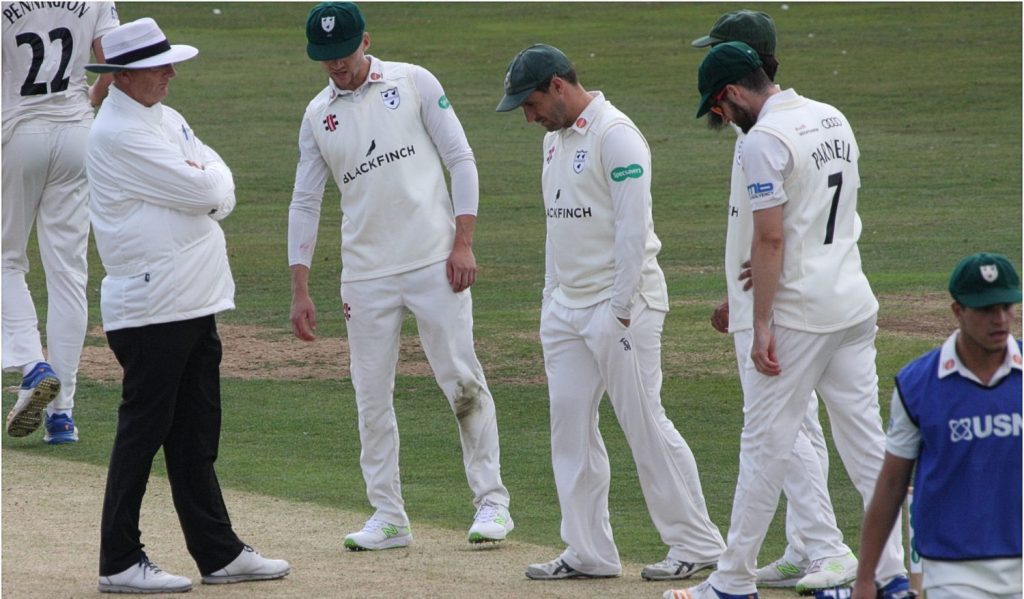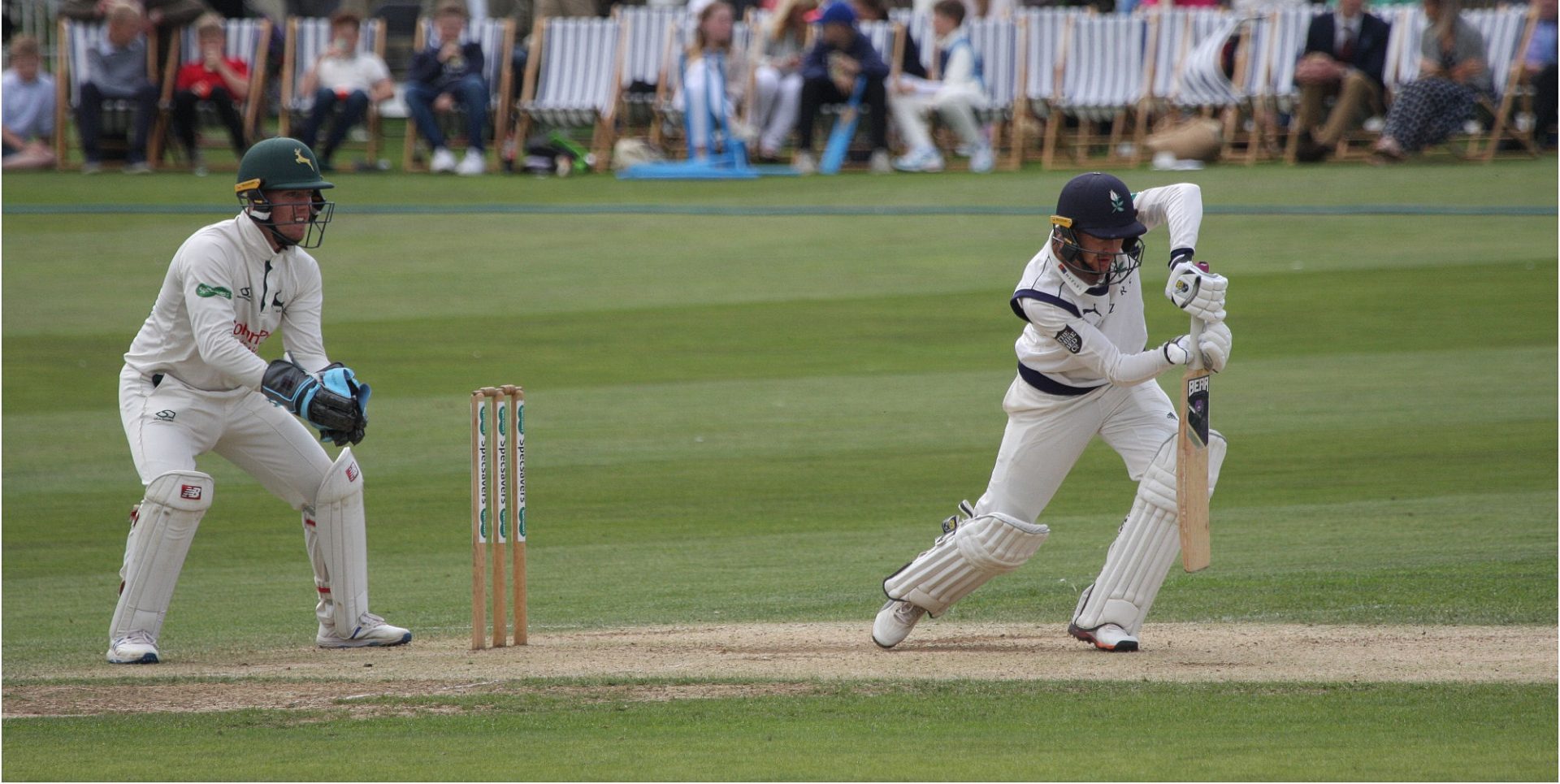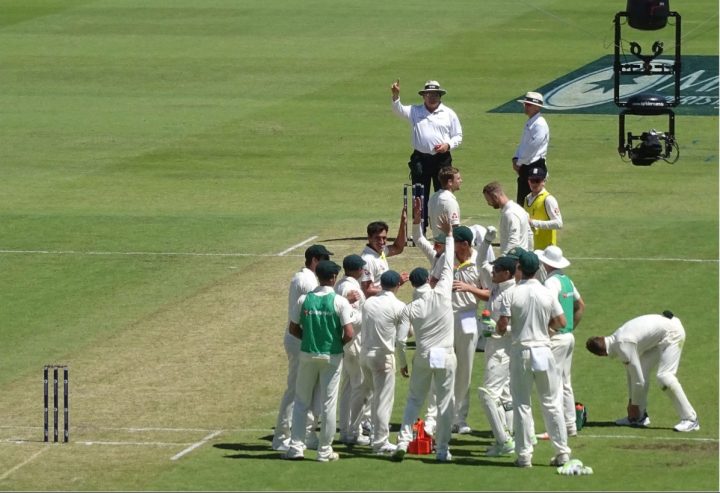Nobody likes getting thrashed. It hurts. But sometimes a defeat is so severe, and so utterly brutal, that it creates a much-needed debate on the systemic problems that created it. The opportunity to have this debate in 2018 was missed. But this time, thankfully, people are finally beginning to address the real issues blighting English cricket. Therefore, I’m hopeful that some good might yet come from this hugely damaging Ashes debacle.
There’s just one problem. Although people are questioning the ECB, and asking whether our current domestic structure can produce a competitive Test side, several observers who should know better are coming up with entirely the wrong answers. Bandwagons propelled by muddled thinking are on the move. And yours truly is truly worried.
In the firing line, of course, is the county championship. And so it should be. It’s currently as weak as I can remember. Standards have dropped and it’s simply not producing batsmen with the technique and temperament necessary for Test cricket. The problem, however, is that critics are taking the lazy option and blaming the number of counties for its current malaise. This is a misguided position based on flawed assumptions. It also ignores a number of undeniable facts.
For starters, there have been 18 counties for decades. And they didn’t stop England from reaching No.1 in the rankings and beating Australia down under as recently as 2010/11. What’s more, we shouldn’t forget that the Aussies haven’t won in England since 2001. County cricket has lots of problems, and it’s clearly not producing the goods at the current time, but the system worked well after the introduction of two divisions in 2000 and central contracts in 2002.
The introduction of two divisions is particularly crucial here. After all, those who talk casually about culling ‘a few’ counties because, allegedly, the talent is spread too thinly, ignore the fact that there are traditionally just nine teams in division 1. The best players usually find their way into the top tier by moving counties. And when they do, they’re usually extremely grateful for their apprenticeship in a fully professional second tier.
Whereas late developers and numerous young players are lost to the Australian professional game, for example, county cricket gives more players the chance to focus on cricket as a career. This is the strength of England’s existing structure. It’s also a considerable strength that we have 18 academies spotting and developing cricket across the land (although some counties clearly perform better than others). Cutting the number of counties would therefore ultimately shrink the game, and contract the number of opportunities for young players, even if there were a short-term uplift in standards.
Critics who advocate culling counties also ignore the strength of English white ball cricket – a strength in depth that’s completely unprecedented. Our 18 counties have recently produced the nation’s first ODI World Cup winners. And our record in World T20 events is strong, too. We’ve won one, got to the final in another, and reached the semis this time before, ahem, sadly losing the toss.
Although some observers don’t like to give country cricket any credit, and prefer to thank the IPL, Big Bash, and other franchise leagues for England’s white ball success, they’re missing the broader context. Why do English players step up so brilliantly in these leagues and make an instant impact? And why are English players so in demand? It’s because county cricket has prepared them so well. Smaller counties, by the way, play a vital role in the vitality of English white ball cricket. Just look how many so-called minnows have won the T20 Blast.
So what, exactly, is the problem with county cricket then? Why is our Test team so bad and our white ball sides so good? After all, England could probably field a white ball second XI and still be extremely competitive in international events (just like Australia in the 1990s). For Stuart Law, Michael Di Venuto and Martin Love, read Alex Hales, Liam Livingston, and Joe Clarke. The difference is that England’s strength in depth is purely in white ball cricket.
The answer to these crucial questions is simple: it’s all about priorities. The ECB have put all their eggs in the white ball basket and the Test team has been paying the price for some time. It’s not rocket science. We all know it. Consequently, there just needs to be an overdue realignment.
The truth is that culling counties would be utterly futile unless red ball cricket is prioritised again. In fact, it would probably make an enormous difference if red ball cricket were merely given equal attention. Other countries like New Zealand field competitive red and white ball teams simultaneously so there’s no reason why England, with our considerable resources, can’t do exactly the same.
Rather than coming up with novel plans and complex formulas to solve England’s Test travails, the solution is therefore quite simple in theory. We simply need to play more championship cricket in summer when batsmen can trust the surfaces and learn to build an innings. Alastair Cook, a man who’s forgotten more about championship and Test cricket than Tom Harrison has ever known, explains why this is so important here. It’s all about the lines that bowlers bowl in April / September and the difficulties this creates for our aspiring batsmen.

But the schedule isn’t the only problem, of course. The lack of quality overseas players and the closing of the Kolpak loophole have also made it difficult for counties to field quality attacks. One of the reasons why county cricket was so strong in the noughties was the number of high quality stars from abroad. Recruiting these players has become more difficult due to the surfeit of T20 leagues around the world.
However, whilst this is admittedly a problem, I don’t see it as insurmountable. For starters, three of the biggest (and therefore most lucrative) T20 leagues do not clash with the height of the English summer. The IPL, Big Bash and PSL are all over by the end of May. Only the Caribbean Premier League, which starts in August, might hinder county recruitment drives. Consequently, counties should still be able to attract some big names – just like they have in the past.
Due to the lack of kolpaks, I’d like to see the ECB increase the number of overseas players allowed to compensate. Perhaps they could even subsidise some marquee signings? It happens in other sports. Surely the ECB can put some of that £1 billion TV deal to good use – although Covid-19 and the enormous sums spent on the Hundred (which eroded the ECB’s reserves) make this more difficult in the short term.
It would help enormously, of course, if the ECB eventually drops The Hundred in favour of a two-division and equally marketed Blast to create more room at the height of summer for first class cricket. However, this isn’t going to happen for a while because they can’t break the TV deal and give the money back. Plus, of course, they’re never going to admit that the Hundred was anything other than a huge success, even though shoehorning yet another competition into an already crowded English summer was always going to create enormous problems.
So what can us ordinary supporters do? I’d suggest that everyone joins the Cricket Supporters Association. It’s the only vehicle we have for pushing our own agenda. It’s also important to keep challenging those who advocate cutting counties. After all, some at the ECB would probably jump at the chance! Don’t let them use their failures to achieve another personal success.
Instead, point those who malign county cricket to articles like this one, which is an autopsy of the Aussies’ Ashes failures in 2013. It bemoans the problems within the Australian first class system and depicts county cricket, with its large number of games and grizzled pros, as a superior finishing school. You could even point them to this article, in which the aforementioned Stuart Law and Michael Di Venuto depict county cricket as a high-quality environment that really helps to develop players.
Crucially, don’t let them forget that the county championship was the strongest first class domestic competition in the world as recently as ten to fifteen years ago. It propelled England to No.1 in the Test rankings, and produced a number of players who made the step up to Test cricket seamlessly. Strauss, Cook, Trott, and Prior, for example, all made hundreds on debut.
Finally, make sure you challenge the likes of Kevin Pietersen, who’s suggesting a Hundred-style franchise system for first class cricket. Although I often find KP’s views interesting because they rarely reflect the mainstream, I fear that he’s got this one very wrong. After all, franchises don’t produce players. And who on earth would invest in a red ball franchise at the current time anyway?
The truth is that Pietersen inadvertently hits the nail on the head (and defeats his own argument) when he admits that, “when I first started playing first class cricket in England, the intensity of a County Championship match was like a Test match … it was as tough as anything”.
Well, rather than throwing the baby out with the bathwater, we simply need to get back to those days. The 18-county structure, with its two divisions and numerous opportunities for professionals both domestic and international, can indeed create a competitive Test team again. So let’s make it happen.
There’s definitely a way. We just need to make sure there’s a will. And we do that by pushing the debate in the right direction. Otherwise English cricket really is lost.
James Morgan









County cricket most of the time and then limited overs on a Sunday. That’s the way it was always done when I was young and we produced test match teams.
Hmmm I remember those days too, but don’t recall our test teams being particularly strong in the 1980s and 1990s.
The problem with English cricket in the 80s and 90s was that talent was indeed spread too thinly and there were too many meaningless games between sides that had very little to play for. Introducing two divisions, which kept the season interesting throughout, and helped the cream rise to the top, largely solved these problems.
When English cricket got these two ingredients right in the noughties, we produced very good Test players. But these lessons have been forgotten imho.
Excellent post!
Would agree to having 2 quality overseas players in the CC although it is not helped by other countries now playing international matches during the English summer, something which never previously happened
The reason the quality of the CC is diluted is that so many players are lost to either other tournaments around the world or England Lions playing games as well as England internationals
The centrally contracted players are also over protected – if England were playing a ODI series in July using non test players which they quite often do, it would mean that the 12 test players plus the 15 ODI players would not be able to play for their counties
For an example of how diluted the CC quality is, Lancs who needed to beat Hampshire in their final CC game to have a chance to win the league were not allowed to play Anderson or Buttler despite the cancellation of the final test v India, Livingstone was playing in the IPL and Keaton Jennings and Mahmood were injured. Thats almost a test side in itself, imagine playing against a Lancs team with those 5 players – the standard would soon start to improve.
County players rarely get the chance to face Anderson, Broad, Archer, Wood – is it any wonder our county players struggle with the step up to international test cricket
Kevin Pietersen; a truly great player, one of the few who transcended all formats of the game at the highest level, however you could wade through his deepest thoughts & not get your feet wet but go deep sea diving in his ego…
The problem with the County game is that the governing body doesn’t trust it to do what it (the ECB) wants it to. Rather than working with domestic cricket the ECB’s current leadership has sought to undermine it; seemingly successfully with the Hundred, but at the expense of the counties trust.
Nobody in their right mind would want a return to the bad old days of the TCCB, where power was poorly used & as a previous poster has said produced some very patchy England teams in the 70s & 80s. However, this administration has run its course, the rule of Graves & Harrison has been very bad indeed for the health of domestic cricket & the ECB now needs structural reform to strike a better balance between the interests of the national team & those of the domestic game. Ultimately these should, of course, be closely aligned.
I’m sure the deal struck with the counties after the Whatmore debacle was that Harrison would stay only so long as it took to have a new Chairperson installed & with their feet under the table. That event should now occur as soon as possible after the end of the Ashes tour. Who knows they might actually get it right this time.
The “marginalised in the season” argument is often treated as the same as the the “pitches” argument but the two are distinct (if somewhat overlapping of course). Pitch inspections must be brought back (when and why were they ever scrapped and why was there no coverage of it?) with clear guidance that pitches that make dibbly-dobbly bowlers look like Dennis Lillee must be hammered as must 600 plays 600 pitches and that some signs of turn are not to be clamped down on. The biggest short-term problem is the “smash a quick 30 before the one with my name on it” culture that’s grown among batsmen.
The longer term problem is that the CC has no autonomous life. The counties have no incentive to improve the product because they get their ECB handouts anyway. Does relegation matter that much to them? How have Middlesex suffered through D2 status? Sussex got a high-profile CEO and became the worst red-ball county in the country so beware that as a solution (anyone else noticing the media silence on that?).
Beyond that, the real problem is that the ECB don’t want to save the red-ball game. They hate it and those who support it (Tom Harrison’s “obsessives”). Ian Chappell said some time ago he was amazed how many administrators he’d talked to who thought the game’s future was T20 only – well, they meant it. They want counties folded into franchises and they want T20 (or the 16.66) to take-off in the USA. Otherwise they’re just squeezing the last few bucks out of a dead duck.
And don’t blame short attention spans… this is their line to convince you that you’re on the wrong side of history. The Tour de France lasts a long time but they push that because they want everyone cycling. Boxsets are more popular than 90-minute (actually usually 140-minute these days) Hollywood movies because people like the more immersive experience. The ‘New Normal’ supposedly has people wanting to get off the treadmill of consumerism and enjoy more quality time so this should actually benefit more time-consuming sports. Funny how it doesn’t quite seem to be working out like that…. (because tbc they want to destroy all rooted allegiances, especially to nations but also localities, so the population can be herded into smart cities which dovetail with the prospective franchises – what a coincidence).
A business reflects its leader. Tom Harrison, who has actively undermined the red ball game throughout his tenure, is the biggest single component of a very complicated problem.
The first thing to do is replace him with someone who believes in the red ball game. Everything else follows from that.
James last line says “otherwise English Cricket is lost”. Well I’d also apply that to the team for the 4th Test: same bunch of failures that played last time apart from Robinson. But wow! Graham Thorpe, about the only coach who hasn’t got the virus, says that his replacement Broad is “like a caged tiger”. I can’t wait. And err..why do they think Crawley is better than Burns, the second (although way behind Root) highest average? You know this whole sorry side and back up should have been replaced.
And either the English spectators are not watching this, or have got too much money to spend, but the home Tests are selling out fast. Just goes to show ECB that you ain’t gonna get rid of Test cricket, even though it’s shit at the moment.
Liew acting as outrider for the agenda re the Ashes. Shorter series… fewer tests… copy the women (because it’s such a great commercial success?).
Degrade a beloved brand; offer reforms that claim they would save it but in reality are designed to kill any chance of revival; kill it for good. How many times do people need to see the playbook before catching on to how this works?
Maybe Liew is just speaking for himself but I doubt it.
Liew has been a big critic of both the ECB and The Hundred. Doubt he’s doing them any favours.
A lot of good points made.
It is a very worthwhile debate on the best way to produce quality players to succeed at Test Match level, but I think the main adjustment should be to prioritise championship cricket in the scheduling of fixtures to run through the main artery of the summer with any one day competitions supporting the longer format.
Difficult to accommodate both the Hundred, and the 2020 competition, the Hundred has I think been an
‘ error of judgement ‘
Maybe best to wait and fully observe until
the Ashes series has finished, and then take a measured view of the best way forward, but having said that it has been a very, very disappointing England performance and changes in all areas should be carefully thought through and implemented.
In conclusion I would not support a motion that recommends less county clubs.
“In the 1990s [a similar record] was accepted as normal for England leaderships and they got away with it. We set our standards much higher than that.”
1) England never lost 5-0 in Australia in the 1990s.
2) Most vaguely intelligent people knew that Australia in the 1990s included some some all-time greats. By the end of the decade they could field an entire top seven who averaged 40+ in Tests (and at least a couple averaging 50+). One of their bowlers would have worked into most people’s All-Time World XI (except Indians!). They topped the rankings which this team doesn’t. The current Australian XI team has two certain greats (Smith and Cummins) with Labuschagne possibly going to join them. Warner, Starc, Lyon and Hazlewood (who’s only played one game semi-fit) are in the very very good class. The others are good players but wouldn’t have been close to getting in the 1990s’ team.
In short, what’s going on with England isn’t a result of some heroic high expectations. Perhaps Giles has started to believe their own propaganda that England lost 5-0 all the time in the 1990s before Sky came along? England got better results against better teams in the 1990s.
Alternatively, the England hierarchy can try to hang on until they next play SA and can pass off winning against opposition stripped of their best players as some form of vindiction of their managerial genius.
I was toying with the idea of reducing the number of counties to improve the quality of the championship, but James’ analysis convinces me that it is not the best solution.
The elephant in the room is The Hundred, 34 games dominating the fixture list and media coverage from the end of July through most of August. That is not going to go away any time soon, but the effect could be alleviated by splitting it up across the summer, for example 12 games (three per team) in May half term, eight more in the last week of July, and the last few – and the playoffs – around the August bank holiday. Plenty of room in between for red ball games to occur at every phase of the season.
Objectors would point to the difficulty of having overseas stars coming and going. If they were all sub-contracted to a county for the season as part of their deal, their presence would improve the quality of county cricket as well. Crowds might roll up for Leicestershire v Northants if David Warner, Rishab Pant, Shai Hope and Jasprit Bumra were on the scorecard as well as the local favourites.
It’s not the quantity of cricket so much as the quality that’s important. We see this is Australia, where they have a limited number of state matches but the club game is much more structured and competitive with direct links to the professional game. This way you can pick up late developers and players tend to come through quickly, be recognised and given an immediate chance to show if they’re ready to make the jump. Whilst It’s good to have all our counties, if they can be self sustaining, the scouting system in my experience revolves around elite schools, so missing most of the potential. With cricket in most schools so limited now it’s important the clubs provide an outlet for youngsters to progress and the county scouts regularly pay visits to as many as possible. It’s easy to spot talent, but even easier to miss it if you’re not looking in the right places.
With white ball now clearly in the ascendancy coaches are naturally going to be passing on and developing skills related to this, so in the context of red ball bad habits are going to instilled at an early age. It’s difficult to see a way out for test cricket with the direction the game is pursuing. The world over it’s more difficult to find batsmen who let the ball come to them, most are going hard at the ball looking to force the pace as there aren’t many close fielders to spoil the party if you get edges. It’s just like cricket has always been, a reflector of the times. There’s never been a golden age, just a succession of formats changing as they go.